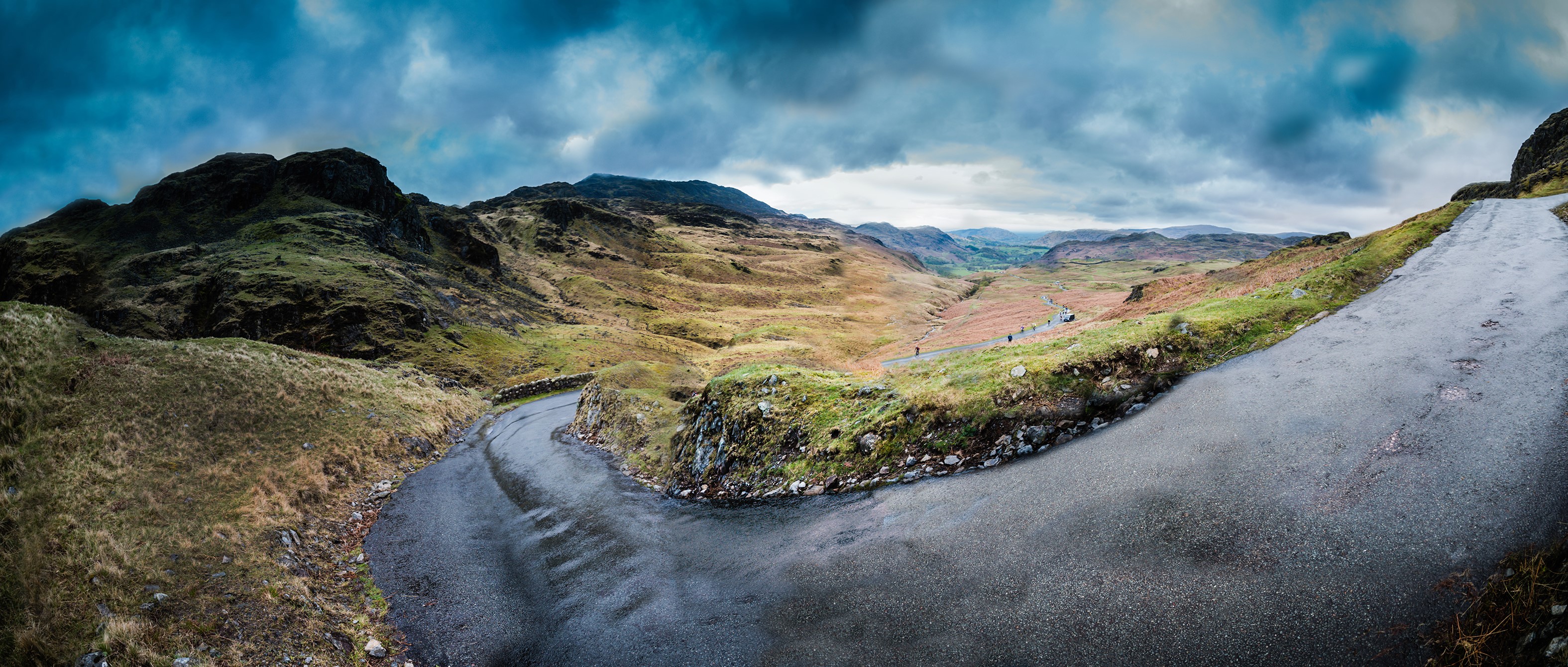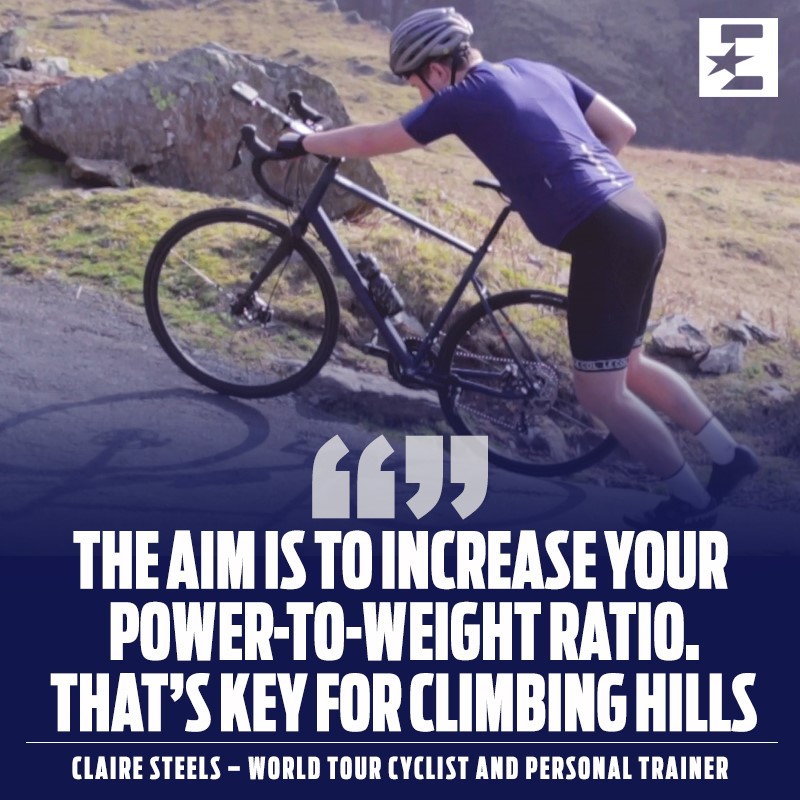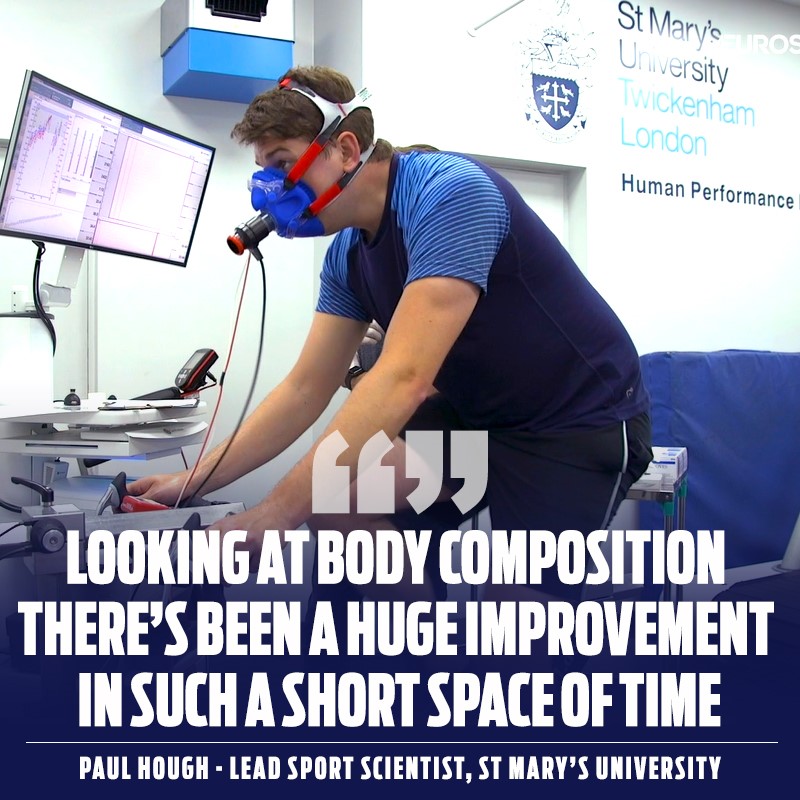The Average Man training programme: Lose weight and improve fitness significantly in just six weeks
:focal(167x134:169x132)/origin-imgresizer.eurosport.com/2021/04/12/3041129-62378324-310-310.png)
Updated 11/02/2021 at 22:19 GMT
In a six-week training programme Eurosport's Average Man lost seven kilograms and nine percent body fat while significantly increasing both his physical fitness and athletic performance. He achieved all of this through a combination of solo training (almost entirely at home), diet improvements, and online coaching. And you could achieve the same results too. This article explains how he did it.
Average Man Hardknott Pass
Image credit: Eurosport
It’s fair to say that sporting excellence is not one of my strengths. As somebody who has spent over a decade in sports media, I am far more accustomed to sitting down and watching sport than I am to participating in it.
And as such I was the obvious choice to be Eurosport’s Average Man – somebody who would show how difficult professional sporting feats truly are for the ordinary person. Fit enough to give them a go, but not fit enough to avoid embarrassing myself on camera.
The challenge on this occasion was an extremely daunting cycling one: to take on the steepest climb in England. Twice!

My task was to attempt Hardknott Pass at my base level of fitness, before undertaking a six-week training programme and attempting the challenge a second time.
I knew it was going to be tough, but the first attempt underlined how unfit I was and just how much hard training there was ahead of me.
/origin-imgresizer.eurosport.com/2019/05/10/2583859-53575890-2560-1440.jpg)
Average Man to Superman: Are six weeks of training enough to conquer England’s steepest climb?
The Training
Just looking at the first week’s training schedule was daunting.
- 1 fasted turbo trainer hour
- 1 overgearing turbo trainer hour
- 1 interval training turbo trainer hour
- 2 long rides – at least three hours, preferably outside
- 1 weights session
- 4 core workouts
- 1 rest day
I had teamed up with former duathlon world champion and current World Tour cyclist Claire Steels to help me with my training programme, and before it all began we talked over my level of exercise, what my goals were and what fitness equipment I had at home (embarrassingly little: a very limited dumbbell set, a budget road bike, and a resistance turbo trainer older than I am).
Yet despite having those conversations it was still scary to see such a volume of exercise written down on paper. This was going to be a big change from ‘maybe I’ll go for a run on Saturday morning if I wake up in time’. However I had a powerful motivator... I had already embarrassed myself on film for the first attempt and not only did I now have proof of what I currently looked like in Lycra, it was going to be hard to explain to my boss if I made no progress in the six weeks.

There would be no point saying the training was easy. It wasn’t. Some days I really struggled to make time for the sessions (mostly due to work, sometimes due to laziness), on a few days I didn’t manage to do them at all, and bits of my legs ached that I didn’t even think had muscles in them.
Core workouts became the bane of my life. I used to do sit-ups as a self-conscious adolescent back in the day, but any misplaced hope of forming a six-pack was a decade in the past… and so was any sort of strength in my core whatsoever. There are few sights less impressive than somebody rolling around on their back like an upside-down-turtle, completely incapable of getting up after what should have been a routine set of crunches. I’m just glad the camera wasn’t rolling at that point.
However, slowly and surely, I started getting more into the training. Core workouts never became fun, but I started to look forward to certain elements of Claire’s training schedule (the overgearing turbo sessions became a real favourite).
And all the weekend miles out on the road also meant I started to feel more confident on the bike itself too, which was encouraging. I had learned the hard way during my first attempt that flaws in your cycling technique are brutally exposed on a climb as steep as Hardknott. But this time I had some expert cyclists on hand to point me in the direction. Claire helped me a lot with the bike set-up and some technical pointers, and Eurosport’s Brian Smith was also happy to offer his advice on how I could improve.
The Nutrition
It was going to take more than just training to get me up Hardknott Pass. I knew that weight loss was going to be a crucial factor if I was to improve with my second attempt, and to lose significant weight I was going to have to change my diet.
Lycra isn’t flattering at the best of times, but anybody who saw my first attempt could see that I was carrying more than a few extra pounds.

Losing as much of that as possible was important, and not just for vanity reasons. Every kilogram I was able to drop was less weight I had to propel up those crazy gradients. Or as Claire so succinctly put it in our initial chat:
The aim of the programme is to increase your power to weight ratio, that’s the key for climbing hills.
I tried a variety of different diet techniques over the training period – a strict week-long meal plan, calorie counting, a food diary, even powdered food replacement… which was admittedly effective but lacked any semblance of joy.
I consumed significantly fewer calories, significantly less carbs, and ate significantly healthier over the six weeks, but that’s not to say I didn’t have the odd blip… one attempt to eat an entire raclette wheel of cheese springs to mind. All-in-all though, I went in to the second attempt feeling trimmer, lighter and healthier (but still not with a torso that suited lycra, it takes much more than six weeks to achieve that!).
The physical improvement
So I had given the training and diet my best shot, but I was still sceptical. How much weight loss and performance improvement could really be possible in just six weeks?
I teamed up with the Physiological Profiling team at St Mary’s University, who test the fitness levels of everyone from keen amateurs to Olympic athletes, to find out. To receive the most accurate information I underwent two tests – one right at the start of the experiment and another two days before my second attempt at Hardknott Pass.
Putting my physical improvement in my own words is tricky, so I’ll turn to St Mary’s lead sport scientist Paul Hough to do it for me:
Looking at the body composition change there’s been a huge improvement in that in such a short space of time. Within six weeks your body fat has significantly reduced, with around about 9% reduction in absolute level of body fat. That’s really positive not only from a health perspective but also in performance – particularly in cycling. When you’re climbing up a hill you’ll be carrying less load so therefore it should be relatively easier.
"In terms of the exercise tests, your sub-maximal markers of fitness have improved. One of the markers we used is blood lactate, and we use the lactate threshold and turn point to determine fitness levels. Both have improved, which means you are producing less lactate within the muscle at the same power output as you were before.
Also, your heart-rate is about 10 beats per minute lower than it was when undertaking the same tests. That indicates that your cardiovascular fitness and efficiency have improved.
"Taken together, your fitness has improved alongside a large drop in body fat, which means that your performance should improve."

Let’s break those results down.
In six weeks I had dropped a total of 7kg, reduced my waist measurement by 5.5cm, and cut my body fat percentage from 26% to 17.5%.
That still meant I was an Average Man, far heavier than ideal for a cyclist and with a far greater body fat percentage. But the improvement was clear and, honestly, more than I could have hoped for.
My athletic performance, judged by my VO2max, heart-rate, lactate threshold and lactate turn point, had also significantly improved.
With a heart-rate monitor on during both of my climbs it was clear to see the impact this made. At the same point early in the climb, when the gradients were still topping 20% in places, my heart-rate was around 10% lower compared to my first attempt.
And I had achieved all of this with just six weeks of training and improved diet (even with that bodyweight of cheese). Granted, I was still very much an Average Man, but I was fitter, lighter and healthier.
Watch my second attempt in full to see how I got on.
/origin-imgresizer.eurosport.com/2019/05/10/2583859-53575890-2560-1440.jpg)
Average Man to Superman: Are six weeks of training enough to conquer England’s steepest climb?
With much of the world currently on lockdown, now is as good a time as any to take on a similar challenge of your own. You could join in with the many free online fitness classes currently available, or you could team up with a professional for a paid fitness partnership. If you’re healthy enough to start then I can’t advise it enough… although maybe try and steer clear of the cheese.
-- Claire Steels is a former duathlon World Champion and rides for the Sopela Women's Team. She runs Steels Fitness, a fitness business that offers personal training, fitness retreats and online fitness programmes. St Mary's University in Twickenham offer physiological profile tests to everyone from casual sport participants to Olympic athletes. The road bike used in the climbs in this feature was supplied by Decathlon UK. Eurosport's Average Man is digital editor Tom Bennett.
Scan me
Related Topics
Share this article
Advertisement
Advertisement